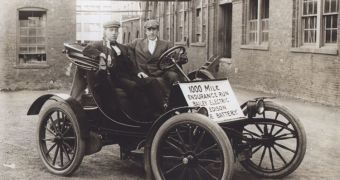In a new study, scientists at the Stanford University have significantly increased the performances displayed by Thomas Edison's nickel-iron (NiFe) battery. The improvement is so significant that the team believes the new version of the battery may be used to power electric vehicles.
This type of battery was first developed in 1901, but researchers have thus far focused their attention on other type of power-storage devices, such as lithium-ion batteries. Now, the Stanford team has decided to revisit the old concept.
When he created NiFe batteries, Edison envisioned using them to power up cars. In 1910, two individuals drove a Bailey on a 1,000-mile (1,610 kilometers) endurance test, while the vehicle was powered exclusively by this type of batteries.
“I think Thomas Edison would be happy to see this progress,” says Stanford professor of chemistry Hongjie Dai, one of the scientists involved with the new research. He explains that most NiFe batteries were phased out of use by the mid-1970s.
At this point, these devices are only used to store excess electricity at power plants using alternative fuel sources (wind farms and solar installations). The main reason why they were replaced is that they tend to charge and discharge over long intervals.
The newly developed version of the battery can be fully charged in around 120 seconds, and discharged completely in 30. Details of how this capability was achieved were published in the June 26 issue of the top scientific journal Nature Communications.
When compared to Edison's invention, the improved NiFe battery is around 1,000 times better. “Hopefully we can give the nickel-iron battery a new life,” Dai says.
In order to increase the performances of both the nickel cathode and iron anode, the team used multi-walled carbon nanotubes and single-atom-thick sheets of carbon called graphene to augment the flow of electrons into the outside circuit.
“Coupling the nickel and iron particles to the carbon substrate allows electrical charges to move quickly between the electrodes and the outside circuit. The result is an ultrafast version of the nickel-iron battery that's capable of charging and discharging in seconds,” Dai concludes.

 14 DAY TRIAL //
14 DAY TRIAL //